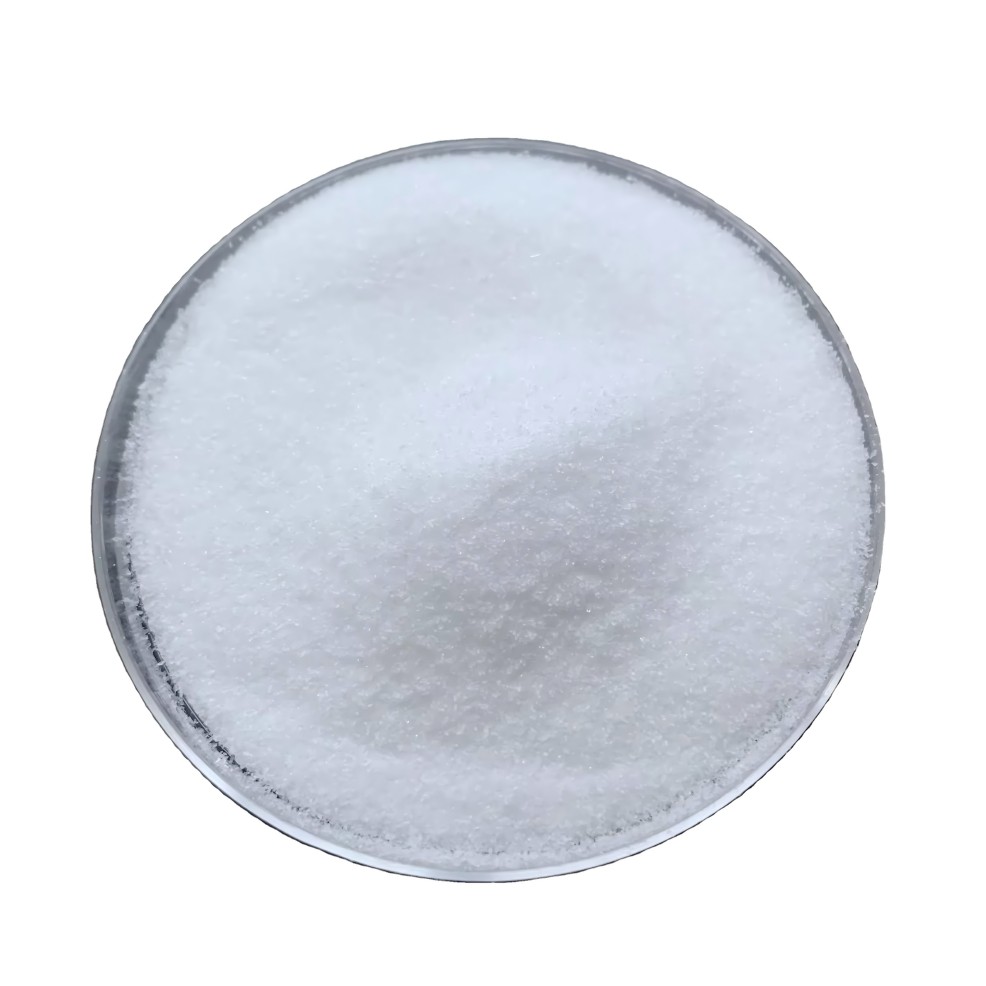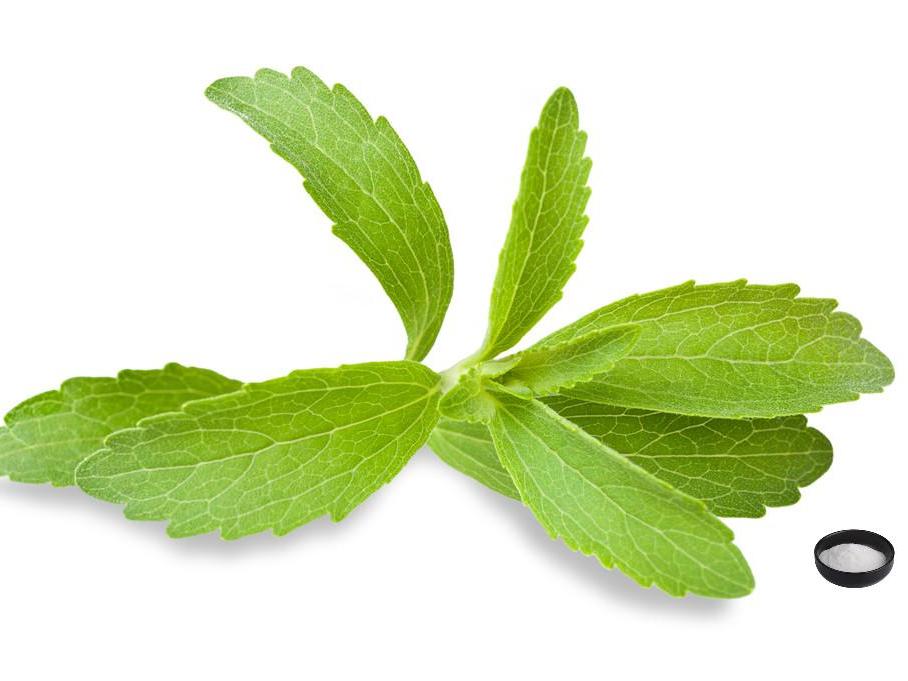D Tagatose poudre 98%
CAS No.:87-81-0
Analyse :98%
Méthode d’essai :HPLC
Apparence: poudre blanche ou presque blanche
Résidu de Pesticide: conforme à la norme (ce) No 396/2005
- Description Description
- Fiche technique
- Certificat de formation
-
Qu’est-ce que le D Tagatose?
Le Tagatose est un édulcorant naturel à faible teneur en calories, structurellement similaire à l’allulose, un «isomère différentiel» du fructose. Le Tagatose est un «sucre rare» que l’on trouve en minuscules quantités dans la nature dans les fruits, le cacao et les produits laitiers. La douceur du Tagatose est similaire à celle du saccharose, avec 92% de la douceur du saccharose, fondamentalement pas de mauvaise odeur ou arrière-goût, et il produit environ 1/3 des calories du saccharose, avec une valeur énergétique de 1,5 kcal/g. En outre, le Tagatose est sensible à la réaction meladique, peut être caramélisé à des températures plus basses, et peut donc être utilisé dans les produits laitiers, les boissons, les produits céréaliers, la confiserie, les fruits en conserve, et d’autres domaines alimentaires.
Green Spring Technology supplies D Tagatose with advanced synthetic biotechnology. Its Tagatose has higher purity and lower cost.
Green Spring Technology est une société de biotechnologie leader en Chine, qui a été créée en 2000 et se consacre à la fourniture d’ingrédients alimentaires naturels, d’ingrédients nutraceutiques et d’ingrédients nutritionnels. Ses produits sont conformes aux normes ue EC396, ue 2023/915 et aux normes les plus élevées en matière de résidus de solvants. Green Spring a obtenu de nombreux certificats tels que Halal, casher, COSMOS, BRC, IFS, FDA, ISO9001, ISO22000, etc.
Spécification:
Nom du produit
D Tagatose
CAS non.
87-81-0
analyse
98%
Méthode d’essai
HPLC/HPLC
apparence
Poudre blanche ou presque blanche
Résidus de pesticides
Conforme à la norme (ce) n ° 396/2005
Règlement:
Il est conforme à la réglementation de l’ue.
Vous cherchez un devis?Benefits:
Low Energy
Animal studies have shown that Tagatose consumes more energy than it releases during metabolism, does not cause fat deposition, and provides much less energy than sucrose. Therefore, Tagatose is a new type of low-energy sweetener, which can reduce the occurrence of obesity. It has been confirmed in the United States that Tagatose is added to beverages in the amount of 5 g/serving (240 ml) with a calorie value of 1.5 kcal/g on the nutrition label.
Lowering Blood Sugar
D Tagatose can regulate blood glucose levels in both healthy people and people with type II diabetes. D tagatose has a high safety profile, and antioxidant activity, and inhibits weight gain compared to conventional oral diabetes medications. Studies have shown that 75 g of D-tagatose given to diabetic patients 30 min before a glucose tolerance test significantly inhibited the rise in blood glucose without affecting blood insulin levels and that a minimum dose of 5 g of D-tagatose (3 times/d) was effective in controlling acetylated haemoglobin levels in patients with type II diabetes mellitus.
Prebiotics
Prebiotics are organic substances that are not digested or absorbed by the host but can selectively promote the metabolism and proliferation of beneficial bacteria in the body, thus improving the health of the host. D-Tagatose is a good prebiotic, D-Tagatose is resistant to human gastro-intestinal conditions, and can effectively stimulate the growth of probiotic bacteria, especially Bifidobacterium infantis, and thus inhibit the growth of pathogenic bacteria. Inhibit the growth of pathogenic bacteria. Studies have shown that D-Tagatose inhibits the growth of caries-causing bacteria such as Streptoccus gordonii, and it has anti-caries function. The functions of promoting the proliferation of probiotics, inhibiting the growth of pathogenic bacteria, and resisting dental caries all reflect the good probiotic function of D-tagatose.
Antioxidant
D tagatose has the potential to attenuate cellular damage caused by intracellular free radicals. D tagatose was shown to inhibit oxidative damage in mouse hepatocytes caused by the drug furazolidin compared to equivalent amounts of glucose, mannitol, or xylose. D-tagatose has a weak iron chelating property. Therefore, D tagatose can protect cells from iron-induced cytotoxicity by inhibiting the production of free radicals caused by iron-catalyzed membrane lipid peroxidation and protein carbonyl formation.
Applications:
In the Food Field:
Tagatose is an excellent low energy food sweetener and filler that has been used in a variety of food processing areas. In the baking field, the low temperature caramelisation of Tagatose makes it easier than sucrose to produce the desired color and more mellow flavor; in the beverage field, Tagatose is mainly used for its synergistic effect on powerful sweeteners such as sweetener, aspartame, acesulfame, stevia, etc., to eliminate undesirable aftertastes, such as metallic, post-bitter and astringent aftertastes, etc., produced by powerful sweeteners, and to improve the mouthfeel of the beverages.
For Healthcare Products:
As Tagatose has a prebiotic effect, it can effectively improve the intestinal flora and prevent colon cancer, so it can be used as the raw material of health care functional food.
In Pharmaceutical:
In medicine Tagatose is used in cough syrups, excipients and foaming agents in pharmaceuticals, adhesives for fixing dentures, moisturizing agents in toothpaste and mouthwashes, mouth washes, and oral disinfectants.
-
Télécharger le document
D Tagatose COA
-
Télécharger le document
Cosmos 2023
Télécharger le documentHalal 2023
Télécharger le documentCasher 2023


 Anglais
Anglais français
français espagnol
espagnol russe
russe coréen
coréen japonais
japonais












